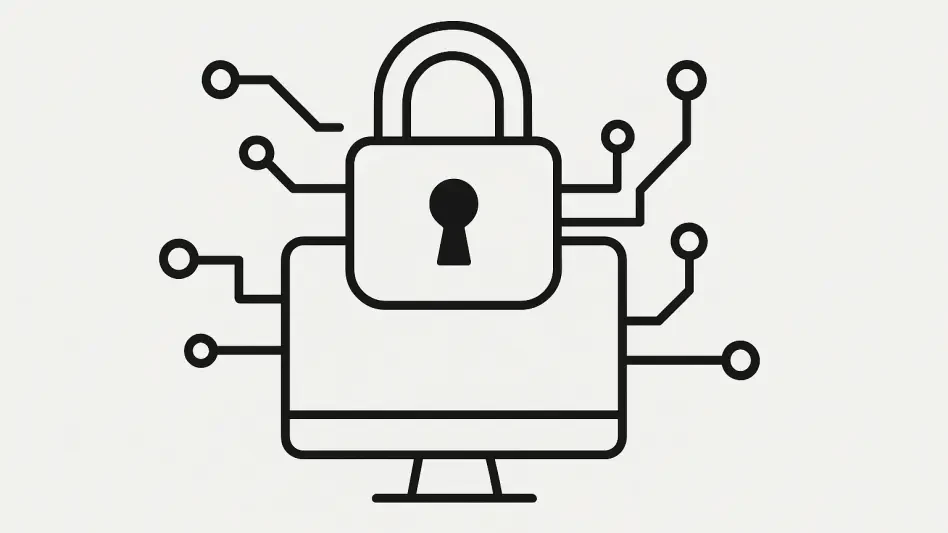In a world where digital convenience often trumps caution, saving passwords in web browsers has become second nature to many. The ease of auto-filling login details saves valuable time in an increasingly digital-dependent lifestyle, yet this very convenience can serve as a gateway for malicious actors. A sophisticated technique identified within the MITRE ATT&CK framework, T1555.003, presents a substantial risk of credential theft, posing a significant threat to personal and organizational security. This method involves hackers extracting usernames and passwords directly from web browsers where users commonly save their credentials, thereby enabling unauthorized access to accounts. The presence of these vulnerabilities could lead to privilege escalation and lateral movement across network infrastructures. As reliance on web browsers continues to rise, understanding these threats is imperative for both personal and enterprise cybersecurity.
Understanding the T1555.003 Credential Theft Technique
The T1555.003 technique preys on the very functionalities designed to streamline users’ digital experiences. Popular browsers like Google Chrome, Firefox, Edge, and Safari offer users the convenience of saving login credentials, which are stored in an ostensibly secure, encrypted format. However, attackers have developed methods to bypass these security measures, extracting credentials in plaintext. Specifically targeting Windows platforms, malicious actors exploit a database file associated with Chrome. By executing targeted SQL queries, they can extract encrypted credentials which are then decrypted using the Windows API function CryptProtectData and the victim’s cached logon credentials. This process signifies a pressing threat where advanced persistent threat (APT) actors gain unauthorized access to critical accounts. Alarmingly, at least seven prominent APT groups have already capitalized on this technique, with notable examples including Agent Tesla spyware and APT41. These groups have diversified motives, ranging from state-sponsored espionage to financial theft, and reflect an alarming trend of browser credential theft.
The implications of this vulnerability are especially severe when compromised credentials pertain to administrative or high-level accounts, facilitating privilege escalation. The present landscape of cyber threats is indicative of a surge in such activities, highlighting the urgency for improved defenses. Attackers leveraging the T1555.003 technique are capable of not only accessing stored credentials but also escalating privileges within a network, leading to broader security breaches. It is essential to recognize that encrypting stored passwords within browsers alone does not suffice in safeguarding sensitive information, as threat actors constantly innovate to overcome these defenses. The increasing prevalence of this method underscores the need for users and organizations alike to reevaluate their reliance on browser-based credential storage, opting for robust, standalone management solutions that mitigate these inherent risks.
Mitigation Strategies and Security Recommendations
To effectively counter this alarming trend, implementing practical security measures is crucial. Organizations and individuals alike are encouraged to enforce multi-factor authentication (MFA) across all systems and applications, thereby adding a significant barrier against unauthorized access. Additionally, routine password changes and strict access control policies prove beneficial in curbing the spread of compromised credentials. Monitoring for unusual patterns of file access within browser credential storage further aids in identifying potential breaches. Security researchers advocate using detection tools such as Sigma rules to track unauthorized access attempts on credential store files.
Beyond reinforcing native browser security features, adopting third-party credential management solutions can offer enhanced protection. These dedicated tools provide robust encryption, secure storage, and streamlined access protocols that reduce the likelihood of credentials falling into the wrong hands. Ongoing vigilance, paired with technology-driven countermeasures, form the cornerstone of an effective defense strategy in mitigating the threats introduced by the T1555.003 technique. As the landscape of cyber threats evolves, awareness and proactive measures are paramount in safeguarding sensitive information from falling prey to malicious exploitation.
The Path Forward in Cybersecurity
The T1555.003 technique exploits browser features intended to ease users’ digital interactions. It targets popular browsers like Google Chrome, Firefox, Edge, and Safari, all of which let users save their login details in encrypted form. However, cybercriminals have devised ways to circumvent security and retrieve these credentials in plaintext. On Windows machines, they manipulate a database file linked to Chrome. By running specific SQL queries, they can access encrypted credentials and decrypt them through the Windows API’s CryptProtectData function, using the cached logon details. This method poses a significant risk as advanced persistent threat (APT) actors gain unauthorized access to vital accounts. Alarmingly, at least seven major APT groups, including Agent Tesla spyware and APT41, exploit this method. Their intentions vary from government-backed espionage to financial theft, marking a disturbing trend of browser credential theft. Users must shift from browser-based credential storage to dependable management solutions to counter such threats effectively.








